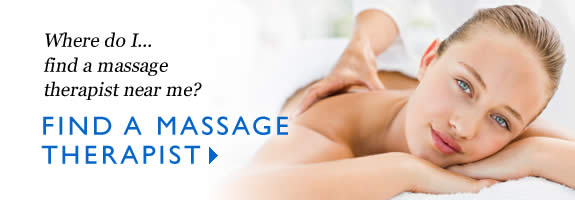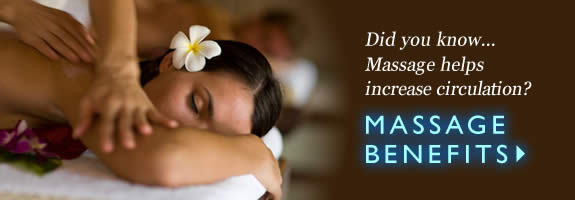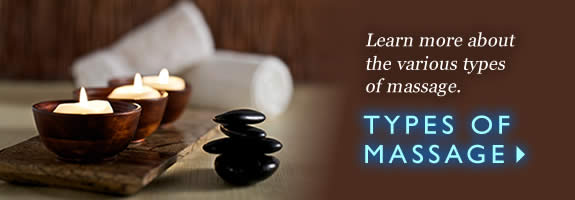
All massage therapists learn the basics of western, or Swedish, massage, though many go beyond that and expand their technique repertoires to include sub-categories or to specialize in one or more advanced techniques. The two most widely known categories are medical massage and those performed at a spa. So what exactly is the difference between the two?
Each category covers a broad spectrum of technique. Neither one is relegated to one specific modality of massage or bodywork. Much depends on the owner of the business and the massage therapists who work there. All massage therapists get schooled in basic Swedish massage, so either type can give an overall relaxing and healthful session. The differences lie in what they can do beyond that basic massage.
Spa Massage
If you choose to go to a spa for your massage, or choose a massage therapist with a private practice that specializes in spa-type techniques, you will be treated to a relaxing and luxurious massage. The environment is conducive to this and will usually consist of lovely, ambient music, perhaps scented candles and low lighting. Some spas will also offer soft robes and slippers for before and after the massage, as well as herbal teas. Signature packages may be available. In Hershey, Pennsylvania, for example, they offer massage packages using chocolate scented oils and full body treatments that read like a dessert menu. A tropically themed spa may offer oils and lotions scented with coconut and pineapple or mango. The variety of packages is endless. The massage may be coupled with herbal body wraps, use of a sauna, a mud bath or Vichy shower. They may also offer such things as manicures, pedicures, facials, exercise classes or even lectures on nutrition and health.
The spa will usually have a brochure or menu of services offered. High end spas will usually offer advanced training to their massage therapists so that all the therapists work within certain parameters of a technique.
Massage therapists at spas usually get paid either by each massage session or on salary. The massage session can last anywhere from 30 minutes to two hours, with the majority being 45 minutes to one hour. Most spas encourage tipping.
Medical Massage
The biggest differences between a true medical massage and a massage at a spa are the time and focus of the treatment. People will often go to a medical massage therapist because of a particular ailment, or because they have been referred by another healthcare professional, such as a physician, chiropractor or physical therapist. A massage may last only 15 minutes, although a full body massage for something like back spasms can last an hour. A 15-minute treatment may focus on one body part, such as an ankle, knee or neck area. A prescription for medical massage may indicate a specific number of sessions and require a specified outcome to be successful. It also requires full documentation by the therapist, which is usually shared with the referring professional and the insurance company.
This difference in time allotted for the massage is also reflected in the cost, which is often dictated by insurance companies or state disability compensation laws. Laws vary regarding reimbursement for medical massage and some are more generous than others; some do not allow any reimbursement or coverage. This could possibly change as new health insurance laws are introduced over the next few years.
It is not always necessary to have a referral to receive treatment from a medical massage therapist. You can make an appointment on your own. In all cases, the therapist will precede the session with a thorough intake questionnaire in order to customize the session for you.
Some medical massage therapists follow up their basic education with very specific technique instruction and certification, such as prenatal massage, geriatric massage, sports massage, polarity therapy, cranial-sacral therapy, hospice related massage and so much more.
The setting for a medical massage will usually be more clinical than in a spa. This will often depend on the type of medical massage. A full body, hour-long massage may still have some relaxing amenities, such as mellow music and lowered lighting.
Most medical massage therapists are treated the same as other medical professionals and therefore do not usually accept tips for their work. Depending on the type of massage you receive, let your conscience be your guide. For example, if you go to a therapist who specializes in medical massage, but you request an hour-long relaxation massage, you may feel that tipping is appropriate.
Almost all the states have a basic requirement with regard to the licensing of massage therapists. A school offering a core curriculum in western massage, plus science courses, such as anatomy and physiology, will be about 500 hours. Some states such as New York require a minimum of 1,000 hours, which include the addition of Asian modalities, such as Shiatsu or Tui Na and medical or sports massage. Most states and the professional credentialing agencies also require continuing education beyond the basic curriculum. This offers all massage therapists the opportunity to not just maintain but also expand their proficiency as time goes on.
Virtually all types of massage will accomplish something positive. Whether in a spa or medical setting, massage will help to improve circulation, assist in removing toxins from the body and reduce stress. An added bonus may be the reduction of aches and pains and the feeling that you’ve had a wonderful mini-vacation.




